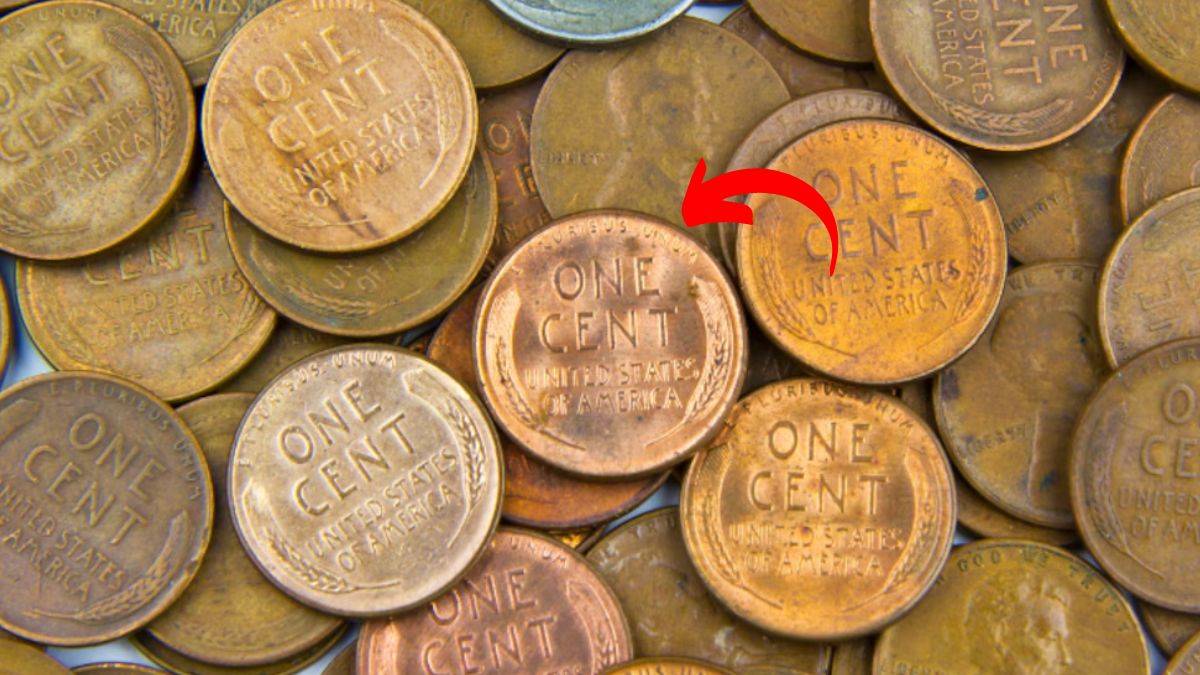The Lincoln Wheat Penny, particularly the legendary 1943 copper penny, stands as one of the most fascinating stories in numismatic history. With its incredible value of $125 million, it represents the extraordinary potential of what might appear to be a humble coin. The rarity, historical significance, and minting errors of the 1943 copper penny make it a prized possession, not just for collectors but as a symbol of American history and ingenuity.
The Legacy of the Lincoln Wheat Penny
- First Minted: 1909, to commemorate the 100th anniversary of Abraham Lincoln’s birth.
- Design Features:
- Obverse: A profile of Lincoln by sculptor Victor David Brenner, the first U.S. circulating coin to feature a real person.
- Reverse: Two wheat stalks flanking the denomination “ONE CENT,” symbolizing America’s agricultural strength.
- Minting Timeline: Produced until 1958, after which it was replaced with the Lincoln Memorial design on the reverse.
The Rare and Coveted 1943 Copper Penny
The 1943 copper penny is a product of a wartime minting error, created during World War II when copper was conserved for military use. Here’s why it’s so special:
1. Rarity
- Intended Composition: Steel coated with zinc.
- Error: A few leftover copper planchets from 1942 were accidentally struck in 1943.
- Known Examples: Only 20–30 are believed to exist.
2. Historical Significance
- Reflects the nation’s resourcefulness and adaptability during wartime.
- Represents an era of significant economic and social change in the United States.
3. Auction Records
- A pristine example of the 1943 copper penny sold for $1.7 million in 2010.
- The $125 million valuation is for an exceptionally preserved specimen with unmatched historical and collector value.
Why Is the 1943 Copper Penny Worth So Much?
Several factors contribute to the astronomical value of this coin:
- Rarity: It’s one of the rarest error coins ever minted.
- Condition: High-grade specimens (uncirculated or near-mint) command extraordinary premiums.
- Collector Demand: It’s a “Holy Grail” coin for numismatists.
- Cultural Significance: A tangible link to a critical period in American history.
How to Identify a Rare Lincoln Wheat Penny
To determine if you have a valuable Wheat Penny, consider these factors:
1. The Year
- 1943: Look for a copper penny from this year.
- Other rare years: 1909-S VDB, 1914-D, 1922 No D, and 1955 Doubled Die.
2. Material
- Most 1943 pennies are steel. Perform a magnet test:
- Steel pennies stick to a magnet.
- Copper pennies do not.
3. Mint Marks
- “S”: San Francisco Mint
- “D”: Denver Mint
- No Mint Mark: Philadelphia Mint
4. Condition
- Coins in Mint State (MS) condition are more valuable.
- Original red luster (RD) coins command the highest premiums.
What to Do If You Think You Have a Rare Coin
- Consult an Expert:
- Visit a professional numismatist or coin dealer.
- Have your coin authenticated and appraised.
- Get Graded:
- Submit it to a grading service like PCGS (Professional Coin Grading Service) or NGC (Numismatic Guaranty Corporation).
- Preserve It:
- Use protective coin holders to avoid damage.
- Store in a cool, dry place.
The Lincoln Wheat Penny’s Place in History
The Lincoln Wheat Penny serves as more than a collector’s item. It is:
- A Historical Artifact: Spanning pivotal moments like World War I, the Great Depression, and World War II.
- An Artistic Achievement: Showcasing the work of Victor David Brenner, whose design broke tradition by featuring a real person.
The Future of the Lincoln Wheat Penny
As discussions continue about the future of the penny in U.S. currency, the Lincoln Wheat Penny remains a symbol of American history. While it’s unlikely that any new Wheat Pennies will be minted, their legacy endures in collections, museums, and historical records.
For collectors, the hunt for rare versions like the 1943 copper penny adds excitement and depth to the hobby. The coin’s story reminds us that even the smallest items can hold immense value, both monetarily and historically.
Conclusion
The $125 million Lincoln Wheat Penny is a reminder of the extraordinary hidden in the ordinary. While most pennies are worth just one cent, this rare coin exemplifies how rarity, error, and historical context can elevate an everyday object to legendary status. Whether you’re a collector, a history enthusiast, or someone curious about the coins in your pocket, the Lincoln Wheat Penny represents the possibility of uncovering a treasure—and a story—worth far more than its weight in copper.
